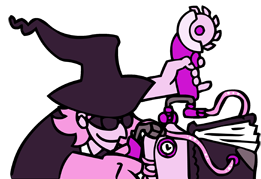14 poems, presented very stylishly indeed, based on the life and work of the painter Gwen John, muse, model and lover of Rodin. But don't expect much in the way of ekphrasis here - Slade's approach to her subject is quiet and tender, giving away very little in terms of narrative or agenda. The pieces are often only a handful of lines long, the figure of John moving through them like a ghost, sometimes explicitly so:
Inside, is like a spare cathedral.
Wind rattles the glass.
Talk to her about happiness.
Touch her cool breasts ('your little Marie')
solitary, like an essence.
('Depot des Marbres')
At the heart of the book is a full colour print of a John painting, A Corner of the Artist's Room. Slade invites us to read into the 'tones and hues' clues about the painter's emotional life. The slick presentation of the book, whereby the title and a sort of subheading are presented on the opposite page to the poem, somewhat obscures the overall conceit, which sees Slade visiting various Parisian streets, rooms, museums and studios in order to unearth the spectre of John in the surroundings she once corporeally occupied. The first (and title) poem is essential to getting the gist of it:
I looked for her in Paris ...
walked from place to place, lived the smells, the sounds,
followed a plan I'd drawn, of houses apartments,
rooms she'd lived in, that sunlight entered at a slant
and felt uneasiness -
not her presence, more an aura of hands.
And in 'Mysteries of the Heart I', the poet begin to experience the echoes of John's life through the materiality of the setting:
Something's grown
misshapen in the wood.
See, through the dark trees
bodies come together
then ease apart.
In the sequel to this poem, however, and in 'The Whistler Muse', Slade relies more on assumption - or rather, imaginative reconstruction - in describing the nature of John's relationship with Rodin, 'Like an argument in his mind - a falseness in her prayer'. At times like this, the idea of real physical resonance in the walls of a room, or of an impression left in the air, is somewhat abandoned and the poetry strays dangerously close to generic pronouncements and images regarding sensitive artists/lovers and their alertness to nature/each other. 'The Last of the Weather' has John on a train journey with - predictably - coast and countryside passing by, prompting her to make notes. There's some lovely imagery - "rocks daubed with rain", light caught inside water making it "translucent, cinereous, silver" - but the waves, birds, clouds, thunder and shifting seasons leave the piece comfortably nestled within the myth of the artist. Slade is much more successful when she plays with the idea of John as an apparition or 'creature' as in 'The Painter', and when she roots herself more consciously in the architecture and atmosphere of the various rooms.

Dr F sez: A smart enough book, but Slade is too enamoured with the language of artists, referencing it where she would do better to translate it! Saying "Of all that's here in tones/hues dissolution ... this radiance" is not the same as imbuing a five line poem with tones, hues and radiance. In the first poem, Slade describes herself living 'the smells, the sounds' of the places Gwen John has lived in. The book needs more of these smells and sounds and less of 'light'. In that poem alone we have 'sunlight entered ... a light went on ... in half-light ... the attic light ... sunlight floods ... the light ... small illuminations". The light is there, as if signalling something, but really just hangs around moodily the way dust gathers in my miles of libraries. Slade's determination to make her words as light-footed or light-fingered as possible means that some of the poems come close to being entirely insubstantial. Take, for example, this slice of 'Abeyance':
The nature of abeyance is
that nothing resolves. She understands this.
Some days she comes fully prepared
and nothing happens.
Only ends resolve. Only ends are
completely without fear.
This is searching too hard and too fruitlessly for subtle profundity. Even in the weightier poems, there is a resistance to anything that might make too deep an impression on the senses - unusual and striking images, for instance. I have to admit, however, that in spite of this, Slade pitches many lines very, very well, achieving the kind of power that's tough to realise when flouncing around Paris in pursuit of a dead daub-peddler. Just imbibe this conclusion to 'Drawing the Dead Leaves':
Rain dripping into crevices -
etudes of loneliness playing the trees.
Fair enough, Slade! With your meteorological musical instruments, you win this time!










